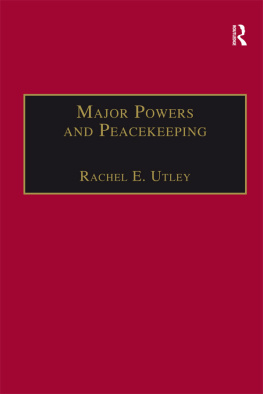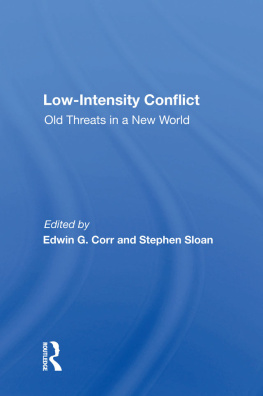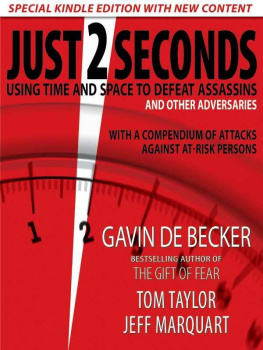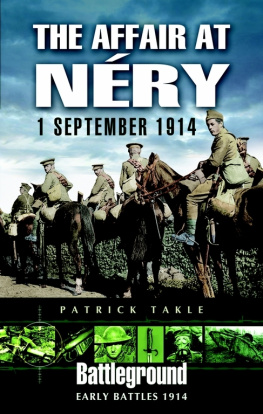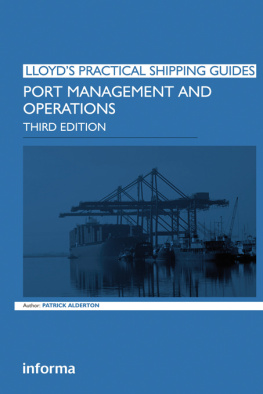
This edition is published by PICKLE PARTNERS PUBLISHINGwww.picklepartnerspublishing.com
To join our mailing list for new titles or for issues with our books picklepublishing@gmail.com
Or on Facebook
Text originally published in 1990 under the same title.
Pickle Partners Publishing 2014, all rights reserved. No part of this publication may be reproduced, stored in a retrieval system or transmitted by any means, electrical, mechanical or otherwise without the written permission of the copyright holder.
Publishers Note
Although in most cases we have retained the Authors original spelling and grammar to authentically reproduce the work of the Author and the original intent of such material, some additional notes and clarifications have been added for the modern readers benefit.
We have also made every effort to include all maps and illustrations of the original edition the limitations of formatting do not allow of including larger maps, we will upload as many of these maps as possible.
CAVALRY OPERATIONS IN SUPPORT OF LOW INTENSITY CONFLICT
By
Major Patrick J. Becker, USA
TABLE OF CONTENTS
Contents
TABLE OF CONTENTS
REQUEST FROM THE PUBLISHER
ABSTRACT
This monograph investigates the historical use of cavalry in low intensity conflict (LIC). This investigation is to determine the possible strengths and weaknesses of our current light infantry divisions reconnaissance squadron in terms of organization, equipment, doctrine, and techniques for employment in LIC. The intent of the paper is neither to produce a paradigm on the use of reconnaissance forces in LIC nor simply to conduct a historical study, but rather to see if our past actions impact on todays cavalry.
The structure of this monograph is to explain the nature of LIC and assess its impact on reconnaissance forces, describe a comparison methodology, conduct historical analysis, analyze the results of the comparison, and then to make conclusions and offer recommendations. The information collection effort was focused on primary source reports from the Army, Marine, and British Army commanders involved, directed research analysis, and personal interviews.
LIC is not new to the American Army. Our Army has been involved in insurgencies both in and out of country from its creation. The Army has fought in numerous insurgencies, however, its involvements in the Philippines, Mexico, Dominican Republic, and Grenada are studied as are the U.S. Marine Corps interventions in Nicaragua and Haiti and the British Armys actions in Malaya and Kenya. These insurgencies were fought in different environmental settings, against different types of insurgents, by different intervening nations. These examples are too few to provide an accurate data base for statistical analysis; however, they provide enough diverse information for comparative analysis by comparing the missions that were assigned to the reconnaissance units involved.
An investigation of our current doctrinal literature suggests that there are some omissions in our doctrine. Lessons learned in our conflict experience should be reflected in our doctrine. After attempting to track some lessons from the conflicts studied, I discovered that some have been lost.
Analysis of the missions performed by reconnaissance units in these conflicts indicates that there are many nonstandard missions assigned to these units. Although these missions are characterized as nonstandard from a doctrinal point of view, their appearance in several of the historical examples warrants evaluation by our doctrine writers.
Historical analysis suggests that our organization for the reconnaissance squadron is sound, however, the squadron may not be optimally equipped. Historical requirements for ground cavalry vehicles suggest that high mobility multi-purpose wheeled vehicle (HMMWV) equipped troops may not possess a vehicle that has adequate crew protection, armament, or amphibious capability that our conflict experience indicates necessary.
Cavalry Operations in Support of Low Intensity Conflict
Politics is war without bloodshed, while war is politics with bloodshed. {1} Mao Tse Tung
SECTION I INTRODUCTION
My purpose is to indicate what may be the strengths and weaknesses of our current light infantry divisions reconnaissance squadrons in terms of organization, equipment, doctrine, and techniques when operating in a low intensity conflict (LIC) environment. This paper is neither an attempt to produce a prescriptive method on the use of reconnaissance forces in LIC nor to simply provide a historical analysis of cavalrys role in LIC. An analysis of our past actions, however, should indicate possible impacts on the organization, training, and equipping of our reconnaissance or cavalry forces when viewed from a LIC perspective.
The significance of this monograph is that this analysis will identify the strengths and weaknesses of current organization, equipment, doctrine, and training for a reconnaissance squadron when operating in a LIC environment. The identified deficiencies should indicate the requirement to modify doctrine, training, force design, or warrant a systemic approach in the research and development (R&D) of technology responsible to security and reconnaissance requirements in LIC.
Cavalry and reconnaissance units of the United States, have been historically involved in conflicts that lie in the realm of LIC (e.g., the Second Regiment of Dragoons was formed in 1836 for use in the Second Seminole War). {2} Our early reconnaissance units spent the majority of their existence conducting operations similar to the counterguerrilla operations of today. Many of the conflicts reviewed in this study were either fought in areas of contemporary concern or in terrain similar to Southeast Asia, Central America, parts of South America, and Africa.
A LIC has the highest probability of employment of the U.S. Army. {3} As Warsaw Pact/NATO relations move into a period of reduced tensions and negotiations reduce the physical means of waging war, the probability of war between the Warsaw Pact and NATO is reduced. As a result of our previous involvements in conflict and lessened tension in Europe, the Armys attention is focusing on its preparedness to conduct successful operations in the less dangerous but more probable environment of employment ...low intensity conflict.
Figure A Spectrum of Conflict {4} Figure B Probability of Employment {5}
A LIC is the most probable realm of employment and the Army has tailored some of its forces for employment in this environment. FM 71-100, Division Operations , states, Normally the most appropriate force in the U.S. divisional structure to conduct combat operations in LIC is the light infantry division. {6} This statement when coupled with Figure B, which indicates the probability of conflict versus the spectrum of conflict, shows that there is great probability of employing the light infantry division (LID) (consequently its reconnaissance squadron) in a LIC environment.
Joint Chiefs of Staff Publication O-2, Unified Action Armed Forces , specifies a function of the Military Departments ...to prepare forces and establish reserves of manpower, equipment, and supplies for effective prosecution of war and military operations short of war.... Assigned this mission, it is essential to determine if reconnaissance forces are organized, trained, and equipped for employment in the most probable scenario. It is important to have doctrine that addresses this environment.







